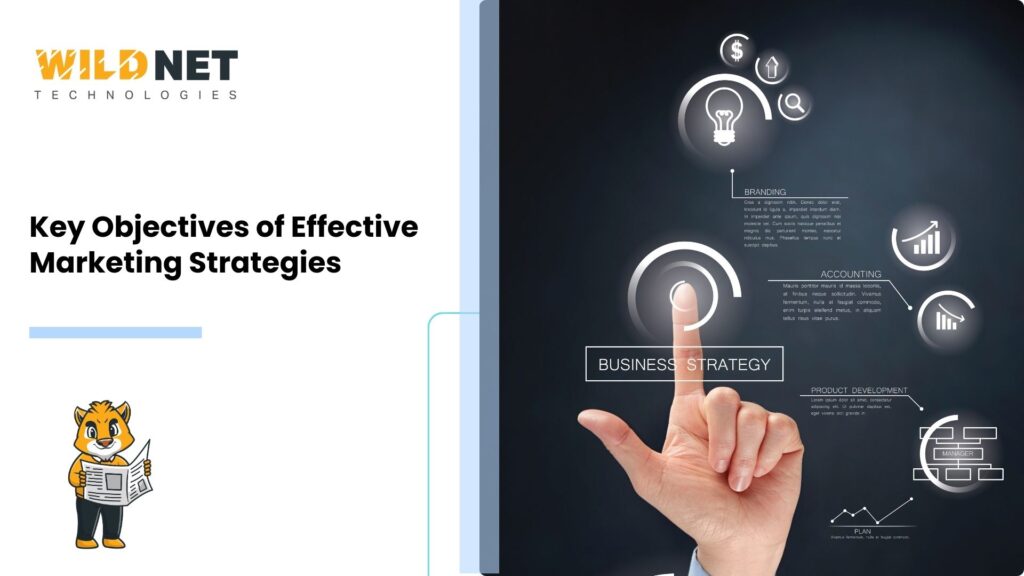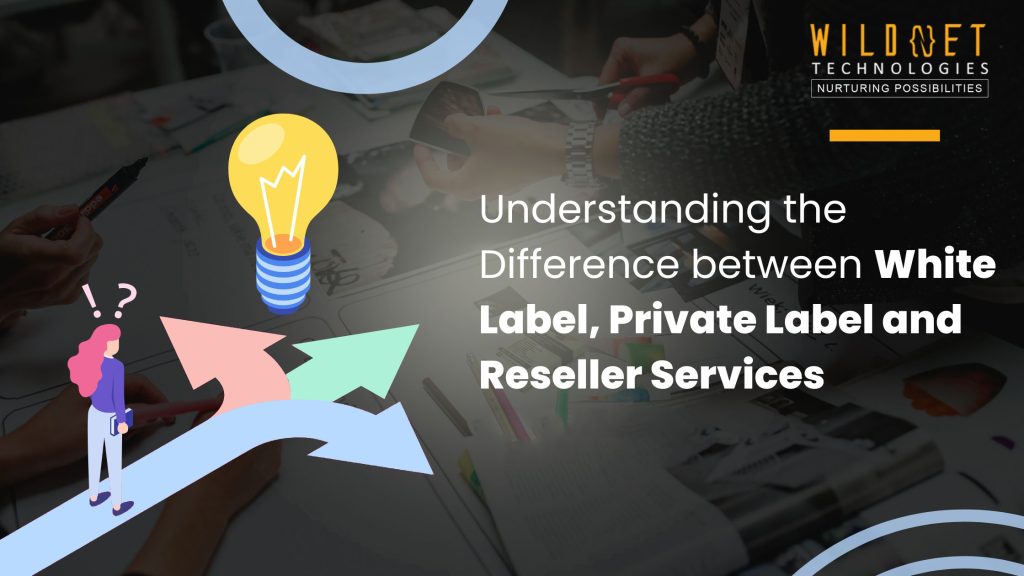Marketing is a vital component of any business strategy. It’s the engine that drives brand awareness, customer engagement, and revenue growth. But what are the key objectives of marketing?
This article aims to shed light on this crucial question. We’ll explore the primary goals that businesses should establish within their marketing efforts.
We’ll also explore how effective marketing strategies can help achieve these objectives. From increasing brand awareness to enhancing customer loyalty, we’ll cover it all.
Understanding these objectives is essential for marketing professionals, business owners, and entrepreneurs. It’s also beneficial for marketing students and anyone interested in the fundamental goals behind marketing strategies. By the end of this article, you’ll have a comprehensive understanding of the objectives of marketing. You’ll also gain insights into the strategic planning necessary to reach these goals.
So, let’s dive in and explore the key objectives of effective marketing strategies.
Understanding the Objectives of Marketing
Marketing objectives are specific goals that guide a company’s marketing efforts. They serve as stepping stones to larger business ambitions, such as increased profitability and market expansion. These objectives often vary based on the industry, target market, and competitive landscape. However, common objectives include enhancing brand visibility, generating leads, and fostering customer loyalty.
To succeed, marketing objectives should be clear and measurable. Defining precise targets enables marketers to track progress and make data-driven decisions.
Setting marketing objectives involves aligning them with the overall business strategy. This ensures cohesion across an organization’s various functions and departments.
Here’s a simple breakdown of typical marketing objectives:
- Brand Awareness: Enhance visibility and establish brand recognition.
- Customer Engagement: Foster interaction and retain loyal customers.
- Lead Generation: Attract and Convert Potential Customers.
- Sales Growth: Drive revenue growth through targeted marketing strategies.
- Market Share Expansion: Capture a larger portion of the market.
Each objective must be realistically achievable within a set timeframe. Balancing ambition with feasibility ensures a strategy that is both challenging and possible.
Regular assessments and adjustments to marketing objectives are vital. Markets evolve, and businesses must adapt to stay relevant.
Practical objectives also consider external factors, such as competitor actions and market conditions. This proactive approach allows a company to anticipate changes and respond accordingly.
Understanding marketing objectives is crucial for building effective strategies. It forms the foundation for any successful marketing initiative. When objectives are clear, it aligns the entire marketing team toward common goals, boosting efficiency and impact.
Aligning Marketing Objectives with Business Goals
Marketing objectives must align with broader business goals. This alignment ensures consistency in efforts across the organization. Start by understanding the company’s mission and vision. This understanding helps to shape relevant marketing objectives.
Consider business goals such as increased profitability and market leadership. Marketing objectives should support these aspirations. For example, if a business aims to boost sales, an objective could be to increase lead generation. Collaboration between marketing and other departments is key. Sales, product development, and customer service teams provide valuable insights.
Discussing objectives with multiple departments ensures that marketing plans complement other business strategies. This cooperation leads to cohesive efforts across the company.
Misalignment creates confusion and hinders progress. Clear communication ensures that everyone is working toward the same end goal.
Evaluating objectives regularly can ensure they remain aligned with business goals. This evaluation involves assessing performance and making necessary adjustments.
Aligning marketing objectives with business goals is crucial for effectiveness. It helps maximize the impact of marketing efforts and contributes to overall business success.
The Role of SMART Objectives in Marketing
SMART objectives are a staple in setting practical marketing goals. They provide a structured approach to goal-setting by ensuring clarity and precision.
SMART stands for Specific, Measurable, Achievable, Relevant, and Time-bound. Each element plays a crucial role in defining marketing objectives.
- Specific: Clearly define what needs to be achieved. Avoid vague objectives and focus on detailed plans.
- Measurable: Ensure objectives can be tracked and evaluated. Use metrics like sales figures or lead numbers to gauge progress.
- Achievable: Set realistic goals that are within the organization’s capabilities. Overly ambitious objectives can be discouraging.
- Relevant: Align objectives with broader business goals. This alignment ensures that every marketing effort contributes to the business’s mission.
- Time-bound: Set a deadline for achieving each objective. Having a timeframe creates a sense of urgency and focus.
Using SMART objectives helps streamline efforts and allocate resources effectively. This approach also improves accountability among team members. SMART objectives guide decision-making and prioritize marketing activities that offer the most value. They are flexible enough to adapt to changing circumstances yet structured enough to provide direction.
The clarity provided by SMART objectives enhances motivation, as teams clearly understand what is expected of them. This clarity leads to better performance and greater satisfaction within the team. Overall, SMART objectives are indispensable in creating successful marketing strategies that are results-driven and aligned with business success.
Core Marketing Objectives Explained
Core marketing objectives provide direction and structure to marketing efforts. They ensure that each activity contributes meaningfully to overarching business goals. Every marketing objective has a specific purpose. This purpose guides decision-making and prioritizes resources to maximize impact. A common aim is brand awareness. Establishing and expanding brand recognition builds a foundation for other marketing efforts.
Customer engagement is another critical objective. Engaged customers are more likely to become loyal brand advocates. Lead generation focuses on attracting potential customers. It fuels sales pipelines with high-quality prospects. The growth of market share is vital for long-term business expansion. It involves strategies that capture a larger portion of the target market. Sales volume and revenue improvement are central to any business’s survival. Strong marketing has a direct impact on these financial metrics. All these objectives intertwine to form a comprehensive strategy. When executed well, they foster sustained business success.
The role of marketing is not only to reach new customers but also to delight existing ones. This satisfaction turns consumers into returning buyers, fueling organic growth. Every objective should be evaluated regularly. This evaluation ensures they remain relevant in dynamic market conditions. Cross-functional collaboration enriches marketing objectives. It enables insights from diverse teams, thereby strengthening the overall strategy. Marketing objectives are essential for strategic clarity. They eliminate ambiguity and align the marketing team with business ambitions.
These objectives are not static; they evolve in response to consumer trends and technological advancements. Staying informed and adaptable is crucial.
Successful marketing strategies are built on clear objectives. They guide marketers toward actions that enhance brand presence and boost profitability. Emphasizing ethical practices in objectives nurtures positive brand perception. Responsible marketing earns consumer trust and loyalty. Marketing objectives serve as the backbone of business strategies. They provide direction, inspire creativity, and ensure focused execution.
Increasing Brand Awareness
Brand awareness is a cornerstone marketing objective. It’s the degree to which consumers recognize and remember a brand. Building brand awareness starts with a consistent and recognizable identity. This identity often involves visuals, messaging, and values. Creating a strong online presence is critical. Social media and digital advertising amplify brand visibility. Engaging content is a powerful tool. Content that resonates with audiences encourages sharing and discussion. Partnerships with influencers can extend reach. Collaborations introduce brands to new audiences, enhancing recognition. Public relations also plays a key role. Favorable media coverage elevates brand status and trust.
Tracking brand awareness is essential—tools like surveys and social media metrics gauge visibility. Ultimately, increased brand awareness supports all other marketing objectives. A well-recognized brand sets the stage for success.
Enhancing Customer Engagement and Loyalty
Customer engagement is vital for lasting relationships. It involves active interaction and personalized experiences. Effective engagement strategies foster loyalty. Loyal customers often act as brand ambassadors, promoting organically. Personalization enhances engagement. Tailored experiences make customers feel valued and understood. Social media is a perfect platform for engagement. Real-time interaction builds a sense of community. User-generated content encourages participation.
It makes consumers feel part of the brand story. Loyalty programs reward repeated purchases. These programs offer incentives that deepen the brand-customer relationship. Regular feedback collection is essential. Adjusting strategies based on customer input improves satisfaction. Prioritizing engagement leads to retention. Loyal, engaged customers contribute significantly to sustained business growth.
Growing Market Share and Establishing Competitive Advantage
Expanding market share is a strategic objective. It focuses on increasing a company’s portion within its industry. A competitive advantage is critical for this growth. It distinguishes a brand in a crowded market. Innovative products or services can attract new customers. Distinctive offerings can differentiate a brand from competitors. Pricing strategies play a significant role. Competitive pricing attracts price-sensitive consumers.
Strong branding enhances perceived value. High-value perception encourages customers to choose your brand over others. Market research identifies opportunities. Understanding trends and gaps guides strategic expansion. Customer service excellence can also be a differentiator. Exceptional service enhances brand perception and loyalty. Continuous innovation ensures relevance. Adapting to market changes sustains long-term competitive advantage.
Improving Sales Volume and Revenue
Increasing sales volume is crucial for business success and prosperity. More sales boost revenue, impacting overall profitability. Effective marketing campaigns are essential. They generate awareness, interest, and action among target customers. Cross-selling and upselling strategies can enhance sales volume. These techniques increase the value of each transaction.
Promotions and discounts entice purchases. Carefully timed offers can spur immediate sales activity.
Understanding customer needs tailors sales approaches. Relevant solutions are more likely to result in sales. Expanding into new markets can drive growth. New regions or demographics unlock fresh revenue streams. Collaborations broaden reach. Partnerships introduce products to broader audiences. Monitoring sales metrics guides strategy refinement. Data-driven insights optimize marketing efforts. Ultimately, sustainable sales growth arises from a cohesive strategy. It combines innovative products, a customer-focused approach, and efficient execution.
Marketing Strategies to Achieve Your Objectives
Marketing strategies serve as the blueprint for achieving objectives. They transform goals into actionable plans, maximizing resource efficiency. The strategy starts with identifying the target audience. Understanding their preferences ensures marketing efforts are well-directed.
Crafting a value proposition is crucial. It communicates the unique benefits of your product or service. Positioning differentiates a brand. Clearly stating what makes you better attracts the right customers.
A diversified approach leverages multiple channels. This includes traditional and digital media like TV, print, and online ads. Consistent branding is key. A unified message across all platforms strengthens brand identity. Flexibility in strategies allows adaptation. It ensures you remain relevant amidst changing market conditions. Cross-channel marketing integrates efforts. It delivers seamless experiences, enhancing engagement and conversion.
Partnerships extend reach. Collaborating with non-competing companies introduces your brand to new audiences. Strategic planning requires monitoring and tweaking. Regular reviews maintain effectiveness and improve results over time.
Lead Generation Tactics
Lead generation is a vital marketing function. It focuses on attracting and converting strangers into potential buyers. Content marketing often drives lead generation. Valuable, informative content draws interest and initiates engagement.
Search engine optimization (SEO) enhances visibility. Higher search rankings increase the chances of attracting leads. Pay-per-click (PPC) advertising targets prospects actively searching for solutions. It offers direct visibility. Social media campaigns engage potential leads. Platforms like LinkedIn and Facebook are popular for B2B and B2C leads.
Landing pages optimize conversion. These pages guide visitors towards providing their information. Email marketing nurtures relationships. Regular updates keep potential customers interested and informed. Finally, tracking lead metrics is crucial. Analyzing data ensures strategies are continually refined for better results.
Digital Marketing’s Role in Modern Business
Digital marketing is crucial for contemporary businesses. It broadens reach and improves engagement with tech-savvy consumers. Search engines play a central role in digital strategies. They connect users actively looking for products to your offerings. Content is king in digital realms. It educates, entertains, and informs, establishing brand authority.
Social media offers direct communication channels. Platforms enable quick and meaningful interactions with audiences. Email remains powerful. Personalized campaigns build relationships with prospects and customers. Paid ads ensure immediate visibility. They complement organic efforts for a balanced approach. Websites serve as digital storefronts. Optimized sites enhance user experience and support conversion goals.
Analytics guide refinement. Data-driven insights ensure marketing effectiveness and return on investment (ROI). Ultimately, digital marketing integrates seamlessly with traditional efforts. Combined, they drive comprehensive brand success.
The Significance of Content and Social Media Marketing
Content marketing educates and engages audiences. Quality content establishes brands as thought leaders. Blog posts and articles offer in-depth insights. They enhance SEO and draw organic traffic. Videos captivate and educate. Engaging visuals appeal to a diverse range of learning styles. Social media marketing complements content strategies. It amplifies reach and fosters community interaction.
Visual content thrives on social platforms. Infographics, videos, and photos significantly boost engagement. Influencer partnerships leverage credibility. Influencers’ endorsements introduce brands to new followers. Hashtags expand conversation reach. They connect brands with relevant discussions, increasing visibility. Content and social media marketing are intertwined. Together, they create a powerful network effect, enhancing brand presence.
Measuring ROI and Analytics
Return on investment (ROI) is a key metric for measuring marketing success. It compares gains against costs, indicating financial effectiveness. Web analytics track user behavior. Platforms like Google Analytics offer insights into site performance.
Social media metrics evaluate engagement. Likes, shares, and comments reveal the level of audience interaction. Conversion rates measure effectiveness. They display the percentage of visitors who take the desired actions. Customer feedback provides qualitative insights. Surveys and reviews highlight areas for improvement.
Cost-per-lead and cost-per-acquisition metrics highlight efficiency. Lower costs indicate superior marketing strategies. ROI aids in strategic planning. Data-driven insights refine future campaigns for better returns. Regular reporting fosters accountability. It ensures marketing efforts align with overall business goals.
Advanced Marketing Objectives for Long-Term Success
Long-term success in marketing requires advanced objectives. These goals ensure sustainable growth and adaptability. Prioritizing customer relationships builds a loyal base. Satisfied customers are likely to return and advocate for your brand. Innovative approaches differentiate a brand. They keep a company at the forefront of the industry.
Adapting to market changes is crucial. Flexibility enables quick responses to consumer trends and preferences. Ethical marketing builds trust. Honest practices foster deep connections with audiences. Corporate social responsibility boosts brand reputation. Socially conscious efforts resonate with modern consumers.
Collaboration among departments amplifies results. It creates cohesive strategies that consider various business aspects. Data-driven insights enhance decision-making. Analytics provide clarity on which tactics yield the best outcomes. Continuous learning equips marketers for challenges. Staying informed ensures readiness for evolving market dynamics. Strategic planning for longevity requires a holistic approach. Integrating these objectives forms a strong foundation for enduring success.
Customer Retention and Satisfaction
Customer retention is more cost-effective than acquisition. Retaining customers boosts profitability through repeat purchases. Personalized communication deepens customer bonds. It makes customers feel valued and understood. Exceptional service is key to satisfaction. Quick resolutions and attentive care increase customer happiness.
Loyalty programs incentivize repeat business. Rewards encourage sustained patronage and refer potential customers to the company. Understanding customer needs aids retention. Listening to feedback drives improvements that keep clients engaged and satisfied. Satisfied customers become brand ambassadors. Their positive word-of-mouth enhances brand image.
Retaining customers reduces marketing costs. Investing in existing relationships offers significant returns. Ultimately, happy customers are the backbone of sustainable growth. Their loyalty propels long-term success.
Innovation and Adaptability in Marketing
Innovation distinguishes leaders from followers. It spurs creative problem-solving and keeps marketing fresh. Exploring new technologies enhances campaigns. Tools like AI can improve personalization and efficiency. Experimentation is key to innovation. Testing new ideas reveals effective tactics that may come as a surprise.
Adapting strategies based on feedback strengthens impact. It ensures relevance amidst shifting consumer expectations—flexibility in planning guards against unforeseen changes. Agile approaches protect against disruptions. Monitoring industry trends prepares brands for future shifts. Anticipating changes provides a competitive edge. Companies that embrace change thrive. They capitalize on opportunities competitors may miss. Ultimately, innovation and adaptability are vital. They drive evolution and ensure continued relevance.
Ethical Marketing and Corporate Social Responsibility
Ethical marketing upholds integrity. It differentiates brands through honest communications.
Transparency fosters trust with consumers. Honest representation builds lasting relationships.
Practicing corporate social responsibility benefits communities. It demonstrates a brand’s values beyond profit. Environmentally-friendly practices resonate with eco-conscious buyers. Sustainability initiatives influence purchasing decisions.
Social responsibility improves employee morale. Staff feel proud contributing to positive change.
Ethics in marketing prevent scandals. Avoiding deceptive practices safeguards the company’s reputation. Incorporating ethics strengthens brand loyalty. Conscientious consumers support brands that align with their values. Ethical marketing drives long-term success. It generates goodwill and secures a reputable position in the market.
Overcoming Challenges and Setting the Stage for Success
Overcoming marketing challenges requires a strategic approach. Identifying obstacles is the first step towards resolution. Clear objectives focus your efforts towards solutions. Flexible strategies accommodate changes in market conditions. Effective communication minimizes misunderstandings. Cohesion among teams ensures unified progress. Adapting to technology speeds up processes. Embracing new tools enhances efficiency and results.
Budget constraints require creative problem-solving. Cost-effective methods often yield high returns. Customer feedback provides valuable insights. It guides adjustments to meet audience needs better. Competition requires differentiation. Unique selling propositions set your brand apart. Consistent evaluation of performance refines strategies. Analytics reveal what works and what doesn’t. Team collaboration drives success. Shared goals unify efforts and maximize outcomes. Learning from past experiences avoids repeating mistakes. Continuous improvement is essential for growth.
Setting realistic expectations builds a positive mindset. Celebrating small victories motivates ongoing efforts. Risk management prepares for potential challenges. A proactive stance ensures readiness for any scenario. Networking expands opportunities. Building connections opens doors to new possibilities. Aligning strategies with business objectives strengthens purpose. This alignment fosters long-term achievement. Commitment to excellence raises standards. High-quality work elevates brand reputation and success. Ultimately, resilience is crucial in overcoming obstacles. Persistence paves the way for marketing success.
Case Studies: Successful Marketing Strategies in Action
Examining successful case studies provides valuable insights. One notable example is Dove’s “Real Beauty” campaign. It addressed societal standards, resonating with consumers and enhancing brand loyalty.
Apple’s focus on simplicity and design revolutionized tech marketing. Their strategy emphasized user experience and innovation.
Nike’s “Just Do It” campaign inspired millions. It connected emotionally, driving engagement and expanding market presence.
Another compelling case is Airbnb’s user-generated content strategy. Encouraging user stories helped build community and trust.
Coca-Cola’s Share a Coke campaign increased personalization. By putting names on bottles, they formed a deeper connection with customers.
These strategies underscore the importance of understanding and addressing consumer needs and desires. Tailored messages create emotional connections. Leveraging modern platforms expands reach.
Continuous analysis ensures strategies remain relevant. Adapting based on real-time feedback maximizes effectiveness. As such, these case studies demonstrate the impact of well-executed marketing tactics.
Conclusion: Applying Marketing Insights to Your Strategy
Integrating these marketing insights can transform your strategy. Understanding objectives provides a clear direction. Tailoring efforts align with consumer needs. Strategic planning ensures sustainable growth.
Embracing innovation keeps you competitive. Monitoring market trends maintains relevance. Collaborating within departments amplifies results. Prioritize ethical practices to foster trust. Continuous evaluation improves performance. Adaptability enables quick responses to change.
Encourage creativity and experimentation. A flexible, informed approach yields the best outcomes. Ultimately, these elements create a roadmap for success.
At Wildnet, staying informed is the foundation of our digital marketing excellence. We believe continuous learning drives innovation and adaptability—qualities essential in today’s ever-evolving digital landscape. Our team is equipped with cutting-edge skills through active participation in industry workshops, webinars, and digital marketing conferences.
We prioritize collaboration and peer networking to gain diverse insights and stay ahead of emerging trends. By subscribing to leading marketing publications and research sources, we ensure our strategies remain data-driven and relevant.
Professional development is a cornerstone of our culture. From pursuing industry-recognized certifications to hosting in-house knowledge-sharing sessions, Wildnet fosters a team of credible, skilled, and future-ready experts. Our openness to change and commitment to growth enable us to deliver forward-thinking, resilient digital marketing services that generate impactful results for our clients.
Read More
What’s the Practice You’d Want to Use for Turning Marketing Insights into Action? 2025 Guide
Core Marketing Concepts: The Ultimate Guide for 2025
How Wendy’s became a Marketing Powerhouse?
How to Measure Digital Marketing ROI Effectively?
How to Create a Multi-Channel Marketing Plan
What Is Cannibalization In Marketing?
1. What are the main objectives of a marketing strategy?
Ans. The primary objectives include increasing brand awareness, generating leads, driving sales, improving customer retention, and building a strong market presence. Each goal aligns with a company’s broader business vision and helps guide decision-making.
2. How does a marketing strategy help in customer engagement?
Ans. An effective marketing strategy utilizes targeted messaging, personalized content, and the appropriate channels to reach and engage with the audience effectively. This builds trust and loyalty, encouraging long-term customer relationships.
3. Why is measuring ROI significant in marketing strategies?
Ans. Tracking ROI helps marketers understand which campaigns are most effective and cost-efficient. It ensures that resources are invested wisely and allows continuous optimization of efforts for better results.
4. Can a marketing strategy help in entering new markets?
Ans. Yes, a well-planned strategy identifies the right audience, analyzes competitors, and tailors offerings for specific demographics. This minimizes risks and increases the chances of successful market expansion.
5. How do marketing strategies align with business goals?
Ans. Marketing strategies translate business goals into actionable plans, ensuring that every campaign supports growth objectives such as revenue, market share, or customer satisfaction. Alignment keeps all departments moving in the same direction.






